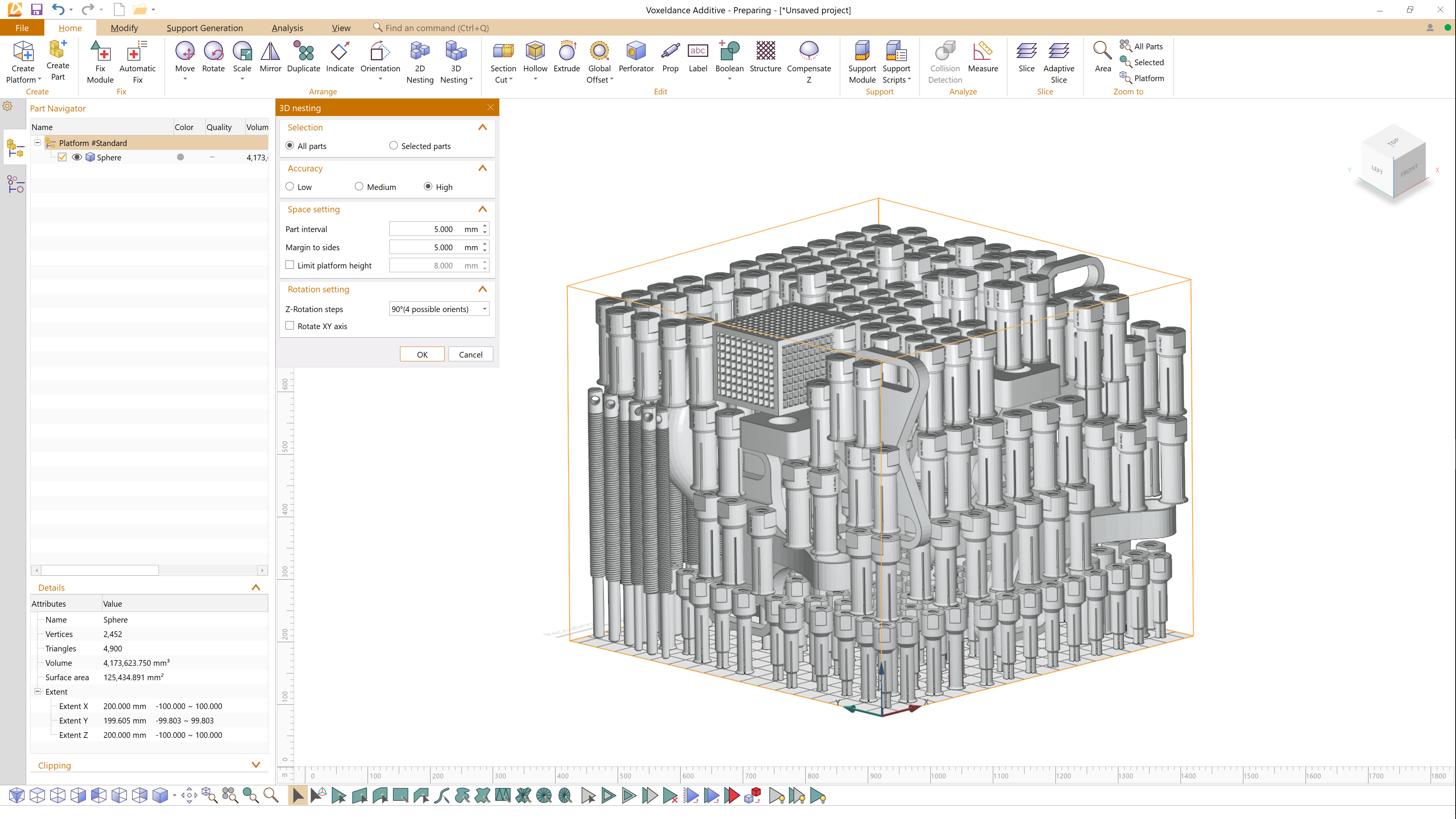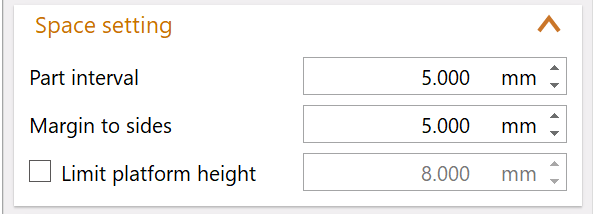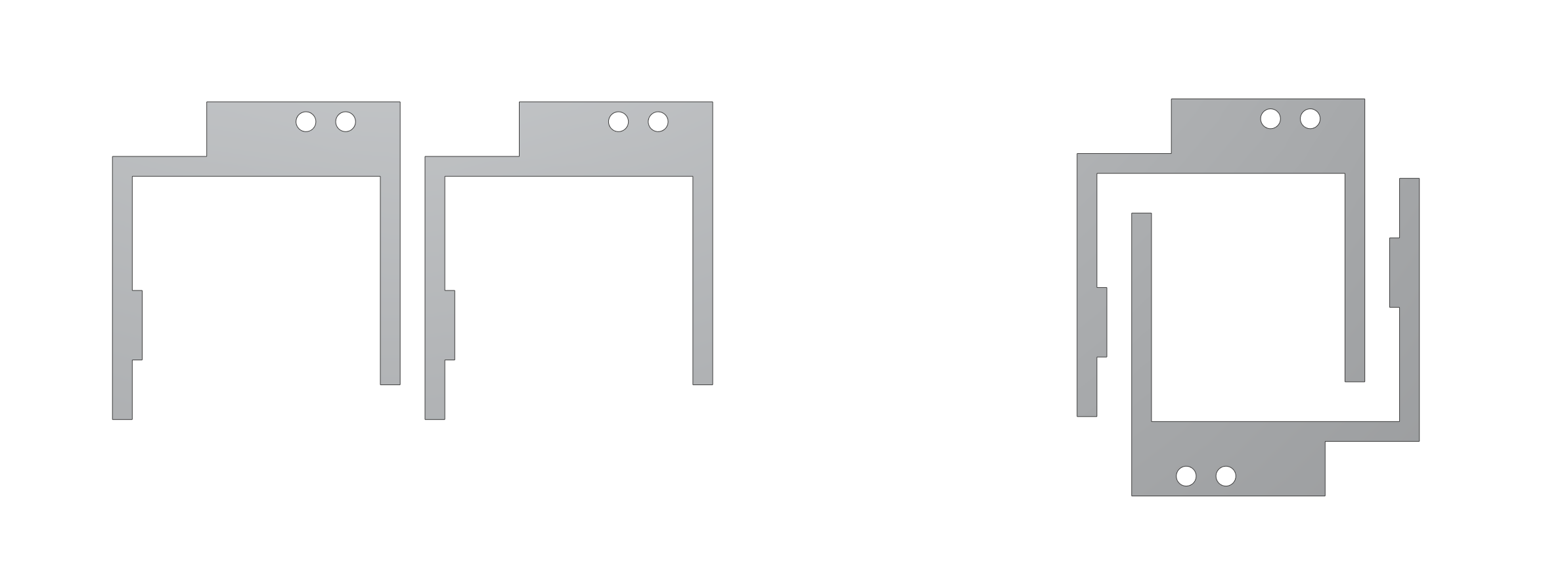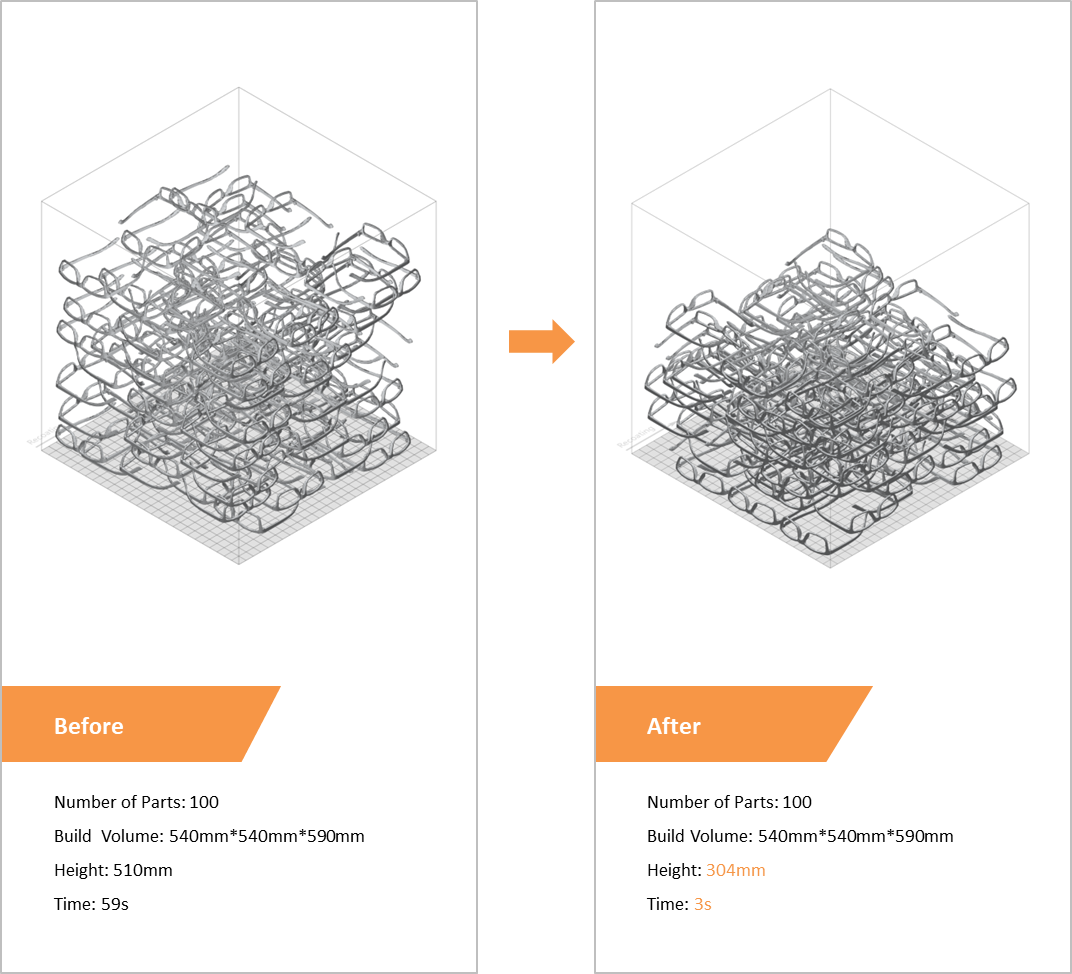Voxeldance Additive — The Swiss Army Knife of 3D Nesting

Wang Song
Why 3D Nesting Matters
Additive manufacturing (AM), also known as 3D printing, refers to a set of technologies that allow the production of highly complex parts in an incremental layer-by-layer material deposition process. Powder-based Additive manufacturing (AM) machines, Selective Laser Sintering (SLS), and Multi Jet Fusion can print multiple parts in a build volume at the same time.
3D Nesting (a.k.a “Packing”) is the process by which a collection of 3D files are sorted, oriented, and arranged in 3D space to minimize their combined bounding box volume. Efficient nesting of multiple parts can significantly reduce unit cost and cycle time in additive manufacturing (AM).

3D nesting in 3D space from VoxelDance
For the above reason, we developed an advanced 3D nesting (3D packing) function in our software. Moreover, in the past two months, we have optimized this algorithm, which has significantly improved the nesting speed and density.
How It Works
Voxeldance Additive's Nesting algorithm is built to minimize the z-height of the batch. It allows users to set part interval, margin to platform sides, limited platform height, parts rotation, and so on.
- Part interval
To avoid fusing your parts together in the printing process, the part interval between all of the components in your 3D file is required to be considered. Small part interval increases the risk of your parts being fused together while large part interval leads to more space needed resulting in the waste of material and time.
Voxeldance allows users to set part interval freely. An experienced engineer can weigh and select the most suitable part interval.

- Rotation setting
The orientation of each part in the 3D printing platform has a great influence on the final product surface quality. For example, rounded parts are frequently placed on the X and Y axes to avoid warpage.
Voxeldance allows users to set Z-Rotation steps. It defines how many options you have when rotating the part along the z-axis. The more steps you have, the more options, and the higher the density you will reach. Voxeldance also allows users to set whether to rotates parts around X-axis or Y-axis.

Furthermore,
our 3D nesting algorithm is based on the geometry of models rather than the bounding box of models. Geometry-based nesting algorithms can nest parts especially organic form parts in higher density.

The left picture indicates the result of bounding box based nesting. The right picture indicates the result of geometry-based nesting.
The 3D nesting algorithm can be divided into 2 steps: Model Analysis and Model Placement.
We learned from customers that more than 90% of SLS printing is to print multiple identical models on the same platform at the same time, rather than models with different shapes. Therefore we added an algorithm to determine whether the parts are identical or not in the latest 3D nesting function of Voxeldance Additive. If the models are the same, in the model analysis stage, only one model will be analyzed. And moving into the stage of model placement, the trajectory of that one model does not need to be repeated on rest models.
This improvement will greatly reduce the processing time.
Last but not least, we improved the Analysis Accuracy in the model analysis stage. This will effectively increase the 3D nesting density of models; We also optimized the trajectory of models in the model placement stage. This will avoid some unnecessary calculation, so as to reduce the processing time of the software.
The following is a comparison of the 3D nesting results before and after the improved 3D nesting placement algorithm.










